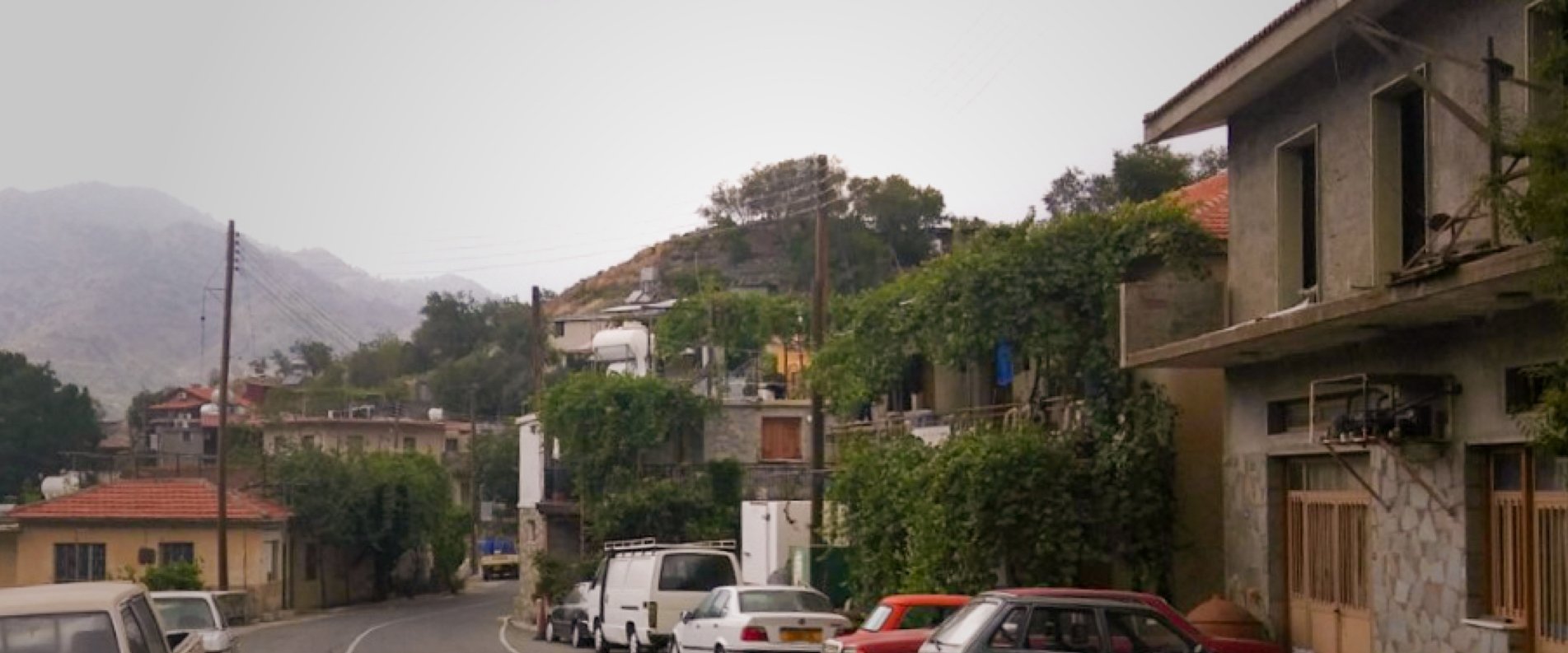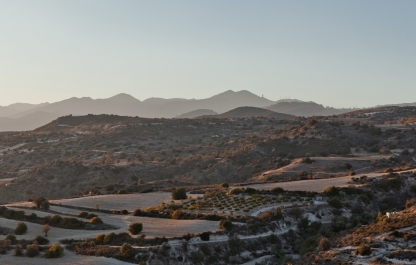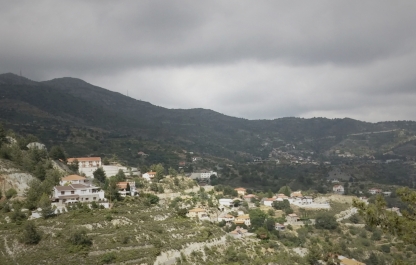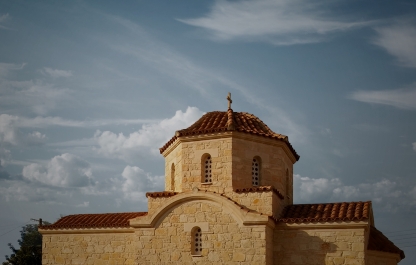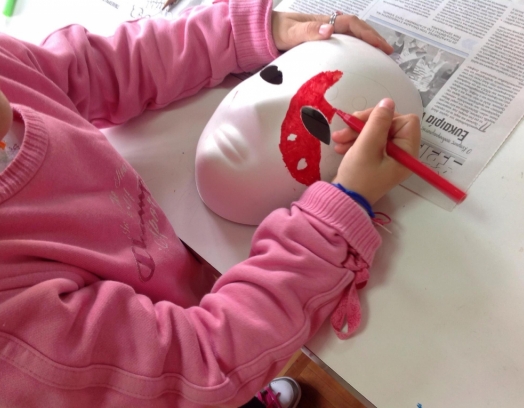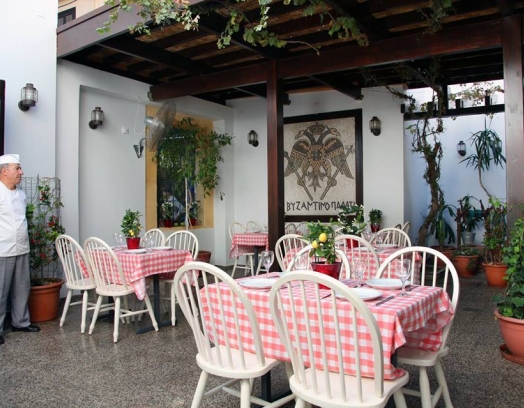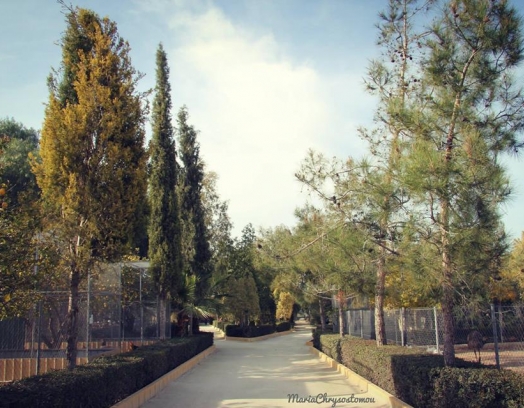On one of the unforgivingly hot days which July had “delighted” everyone on the island with, we predictably decided to continue our discovery of the Troodos, venturing albeit not too far, but further up into its cool, green depths. On one of our past trips, we told you about the fascinating, unexpected places in the Pitsilia region, which we were lucky enough to visit. Today we shall continue to wander through this region, and invite you to join us on our journey…
At first glance, the route we were to take was simple and straightforward. Nevertheless, on our “lap of honour”, we encountered stunning corners of nature, gripping stories and most importantly — new friends…
Polistipos: Somewhere under the Clouds
The feeling of moving along the very green-filled road away from Nicosia, assuredly heading upwards along the winding roads, was simply wonderful. But as soon as we arrived and got out, we realised our head was spinning, and our ears popped.
Another expected and more welcoming bonus was the lower temperatures, unlike those in Nicosia. You can compare for yourself: the capital that day was choking from 42-degree heat, the scorching sun and standard dust clouds. We were enjoying the mountain air in Polistipos, which at 28 degrees was definitely fresh, if not cool. The breaks in the clouds were also very welcome!
So, we arrived in the next high-mountain village — very small, but picturesque in appearance (as everyone who has been here at least once will state in unison). Generally, it is easy to see from a map that Polistipos is the neighbour of our beloved Palechori, so can picture its atmosphere and beauty if you've already been, or at least flicked through our article.
We stopped at Archbishop Makarios Street by the gates of Agios Nikolaos — the main village church, where strictly speaking, the road ends. There’s a small but cosy municipal parking spot, located on a square with a panoramic vista to the Troodos mountains and our little village.
The exact date when the village was founded is unknown, with various researchers still struggling to arrive at a definitive conclusion. However, it is considered to have existed since the Middle Ages.
Polistipos has complete rights to be on the list of the highest “located” villages, as it was built 1150 metres above sea level. Besides, it’s one of the smallest villages in the Nicosia region, standing third amongst the smallest settlements in the island’s administrative headquarters, with a general area of 239 hectares, including its agricultural and arable lands.
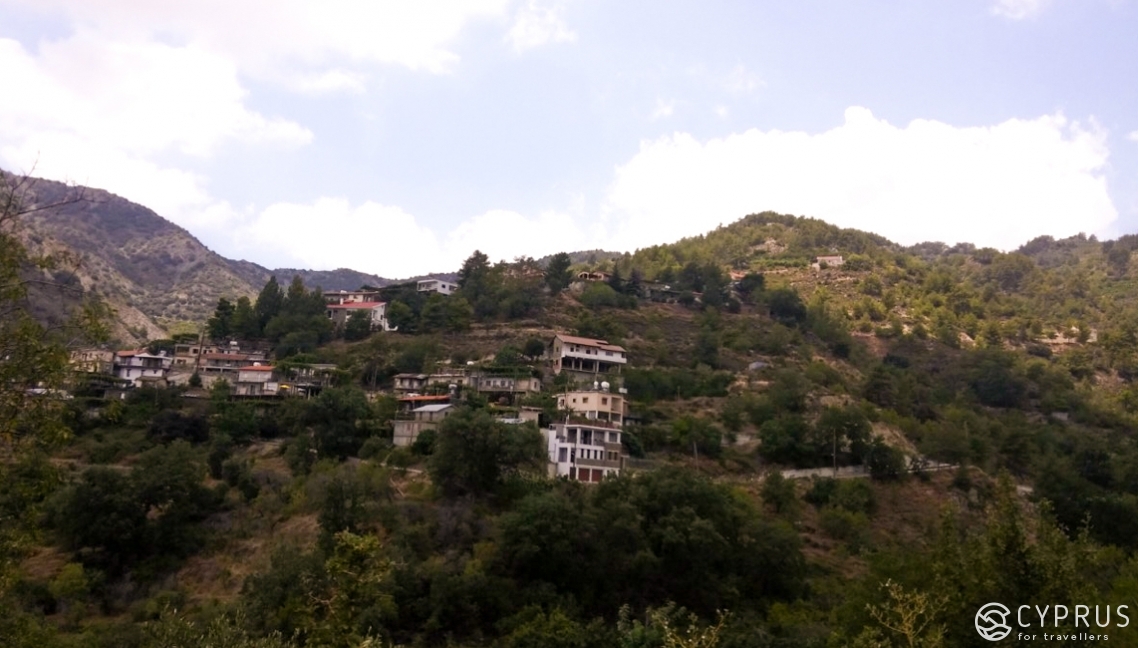
The name Polistipos is rather complex, implying a location with many… “legs” (or “stalks”), that is — it refers to the abundance of grapevines growing here. In the Antiquity, the village region was actually full of vineyards, the number of which considerably decreased over the 18th century (the period of Ottoman dominion).
The reason for this was the new “taxation system” on wineries, under which allotments of land, along with the cultivated vineyard plantations on them, were taxed with large sums, which were more than what simple villagers could afford.
This system is referred to a little later by the French traveller and antique connoisseur, Louis de Mas Latri. In his notes [1], he writes about the taxation issue and Polistipia, specifying that in the distant past, under Frankish reign, the village belonged to the crown. Earlier historians and travellers stated that Polistipos initially acquired its name in honour of the Apostle Andrew, for according to documents which have survived from the Middle Ages, the village was listed in this region with the title: “Apostolos Andreas Polistipos”.
Besides, Apostolos Andreas was once a monastery, under whose walls the settlement emerged. This hypothesis is confirmed today by a geographical map from 1973, constructed by the Dutch cartographer Abraham Ortelius (1527-1598), who marked the settlement with the same name. In the so-called Leimonida, one of the manuscripts housed in the museum here, Polistipos is referred to as one of the mountain villages included in Saint Rinc.
According to other sources, it’s highly likely that an earlier settlement known as Avlonitis once existed on the site of today’s village, or somewhere nearby. For some reason, the settlement was later abandoned by its residents or thereafter fell into the limits of Polistipos.
During the Ottoman reign, island locals leaving their villages was generally a rather common phenomenon. Of the 850 villages noted during Frankish dominance, only 600 populated areas were registered from the beginning of the Ottoman occupation — a number which, on the whole, remained the same for a long time.
The reasons for more than 200 settlements emptying at that time were mainly epidemics, infectious diseases, or the absence of water and land fit for cultivation. Let’s not forget the significant factor of the locals facing danger from the authorities, who would, from time to time, orchestrate raids and punitive excursions, making the villagers move to safer regions.
As you’ve most likely arrived from the city, don’t miss your chance to spend at least a couple of hours here. To experience something unique, enjoy the clean air and an unhurried stroll, all the while discovering the beauty and power of nature.
In fact, the village is still renowned for its developments, which have preserved some traits from the locals’ former way of life. So there’s definitely something to look at here. What’s more, like in many other villages in Pitsilia, pedestrian paths have been laid around the vicinity. You’ll also see and learn a lot of new things from the info stands, installed by the Cyprus Tourism Organisation (CTO), which pop up here and there along the way.
If you’re lucky enough to find a free room for rent (in theory, they are always available, owing to the adverts on some house windows), then stopping for several days will fully allow you to gauge everything here. You can evaluate the climate, the distance of the vineyard and domestic wineries, as well as the abundance of olive groves and fruit plantations — the fruits of which are a private guest in village shop selections, in the form of sweets, tasty treats and delicacies.
Let’s get back to the local sights.
The Church of Saint Nicholas
Dedicated to the Archbishop of Myra, the wonder-worker, the patron saint of sailors and the Polistipos people. It’s a rather large and unique building in its own right… even for Troodos.
Although the church in its current form was constructed in 1912, it was only consecrated and opened for service on the 2nd of November 1952.
It’s a sturdy building, crafted with a combination of local stone, old tile fragments and broken pieces of ceramic (fencing or fortifications for terraces on the island are most often built from this), surrounded by tall pine trees. The church is considered to be of a “Franko-Byzantine” style, characterised by tall wooden roofs with flat “hamos” tiling, and for this reason, stands out from others which have ever towered over the lands of northern Pitsilia.
The previous church (1834), also dedicated to Saint Nicholas, was located in the same spot [2] standing at almost 14 metres in length, with a height and width of 8 m and 5 m respectively.
The new church has been erected “around” the former build. In 1912, completion of construction was commemorated with an Easter service in the old church (the final divine service within its walls), after which it was dismantled, leaving only the erected walls of its successor. The old iconostasis and all its icons were placed in the new church. A little more than 20 years ago, the new iconostasis, in addition to the one from the old church, was finished.
An element of particular interest is an old limestone bas-relief depicting the Saint, which is located to the right of the main entrance (the work of master-carver Christos Kantos), with an annexe later (evidently in the early 1950s) attached to the bell tower.
Nowadays, the church is open on Sundays and on important holidays.
Please note: Archbishop Makarios III street is the main, albeit, for some reason rather narrow road in this quarter (enough for one car). Plus, it's open to traffic from both directions, so be attentive and take your time when driving along here.
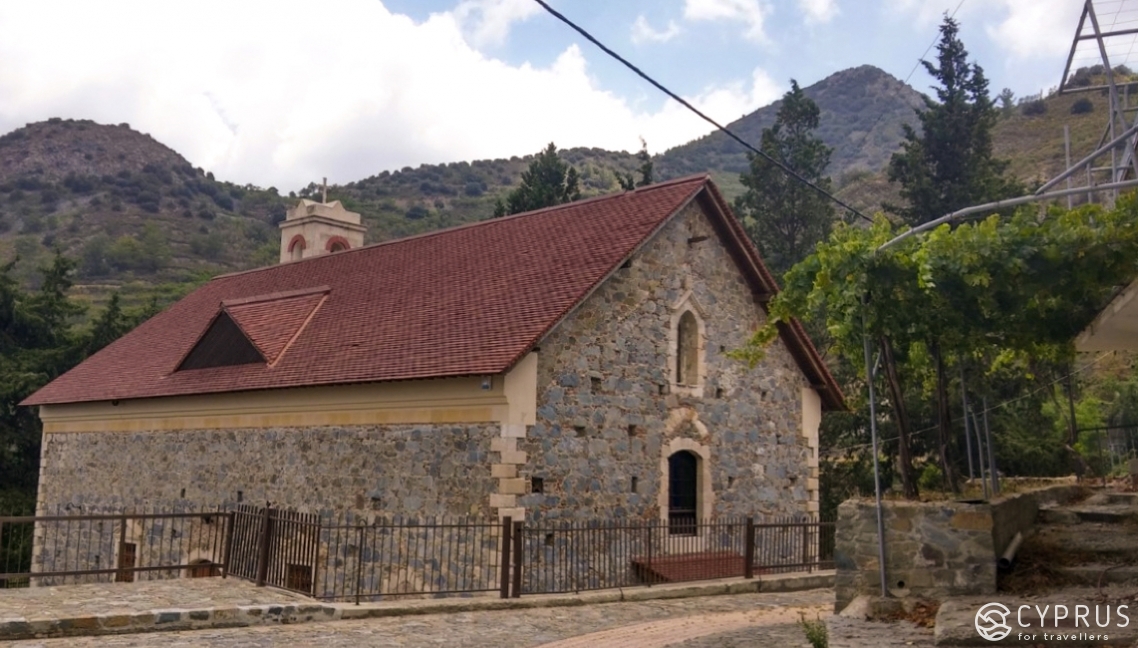
After visiting the church of Saint Nicholas, if you’ve got the right shoes for it, you ought to “have a run around” inspecting the village landmarks: despite its small size, the village is widely scattered over the hillsides. Therefore, to look around properly, it’s worth doing so on foot, as the small streets aren’t convenient for driving through everywhere.
The Chapel of Agios Andreas
This is another landmark located high on the hillside, and the only construct in honour of the Apostle Andrew. It lies slightly beyond the village limits in the North, almost 300 metres from the exit of Polistipos, and not far from the road leading to the neighbouring village of Livadia, as well as to Nicosia.
This was once the location of a dwelling named after the Apostle said to have emerged in the 12th century. The chapel itself appeared on the territory in 1869, when the monastery had already long been inactive: it experienced its heyday in the year 1700, but very soon after, as a result of an earthquake, and then an epidemic in 1708, it ceased to exist altogether. It was only in 1898 when the former dwelling, with everything that had once belonged to it, was transferred to the estate of the Kyrenian diocese. It also began to lease land allotments and gardens for the benefit of the local population.
As you exit to the left heading for Alona, the next in our line of village destinations, you will discover behind one of the turnings, situated high above the village…
“Laouda” Municipal Park
This is a trendy spot for many reasons: firstly, it’s a well-kept, shaded green park, featuring a children’s play area, as well as a parking spot with a panoramic vista of Polistipos, which looks like an amphitheatre from up here. Secondly, it’s also the location of the large restaurant-tavern “The Pantheon”, which offers its guests a great selection of dishes.
Telephone: +357 22652502, +357 99310626
Tip: if deciding to spend an evening in the restaurant, don’t forget to bring something warm to wear over your clothes — even in post-lunch hours, it turned out to be breezier and cooler than the atmosphere in the village itself, so make of that what you will.
Secondly — one of the memorial sites linked to the EOKA movement is located here: a monument with statues of the two heroes [3], Christos Tsiartas and Andreas Panayiotou, who were part of the EOKA forces’ national struggle against English troops.
And finally, you can also take a stroll, at least for a short distance, to try mastering one of the tourist routes available.
Did you know: one of six so-called “wine excursions” developed by CTO (Cyprus Tourist Organisation), takes place through Pitsilia and its villages. Alona is point No. 6 on this “journey”, to which a stand by the restaurant testifies. We took a short break and continued our journey: now steadily heading downwards along the winding mountain road.
During our visit, roadworks between the villages were underway like nobody’s business. We hope by the time you go there the local main roads and through-roads between the villages will delight you with a fresh layer of tarmac.
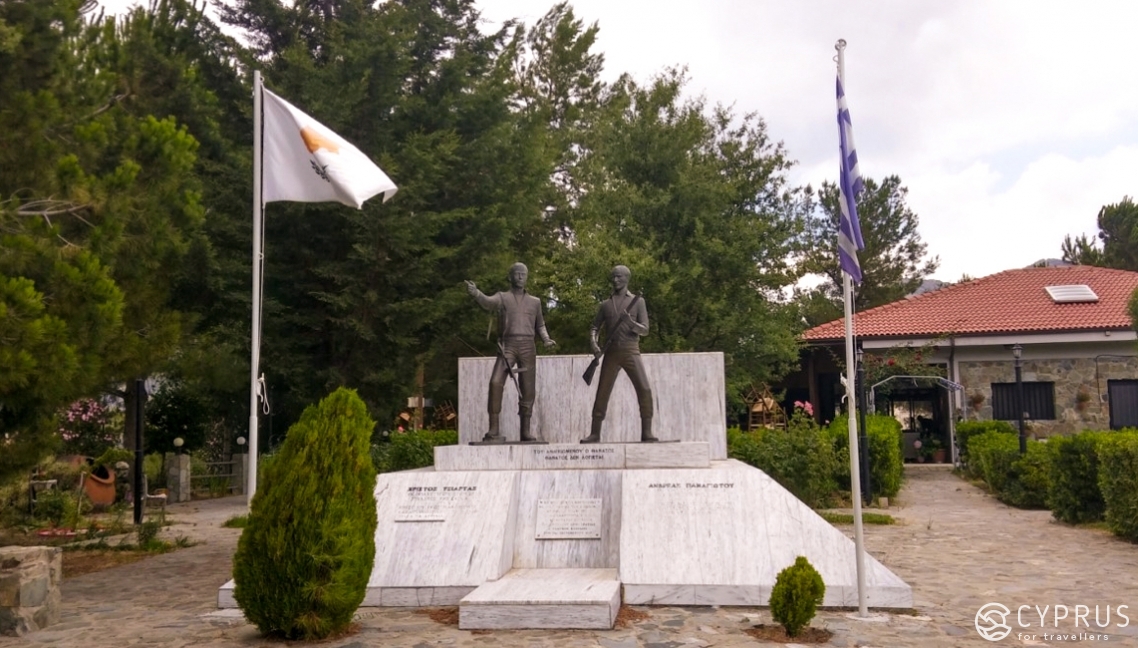
What Else is There to See if You Have the Time:
The Valley and Nut Forest
In early April, this stunning valley is blanketed in a fertile patch of green and preserves its colours deep into Autumn. In May, you’ll have the chance to hear nightingales singing, while in August — there’ll be an opportunity to feast on fresh hazelnuts.
The path to the nut forest begins from a natural source of clean water (known as “vrisi”) in the lower part of the village, which travels under the mountains. You will also be able to see various forms of plant life: the nut trees here, for instance, often have several trunks leading out from one root; you’ll also encounter pomegranates and almonds. Without question, the most exotic of the local flora is the wild orchid species Epipactis Microphylla, which only grows next to the roots of the nut tree. This Cypriot endemic (meaning it isn’t met anywhere else on the planet) has small white flowers which bloom at the start of May.
Your journey will be made all the more captivating by the many colourful butterflies fluttering in the thickets, as well as the hubbub of singing birds. It will most likely take you 35-40 minutes.
The Madari Summit
This is an ideal spot for a romantic stroll or simply a walk to continue learning about the local Troodos flora and fauna, as well as to do some exercise.
Getting to the start of the route: begin at the highest part in Polistipos village and head upwards into the mountains along the road for Lagoudera, Agros and Kyperounta. This will take 5 minutes in a car, after which you’ll find yourself on the border of both Nicosia and Limassol. There, you’ll see a signpost where you’ll need turn right, then head along a tarmac road for another 5 minutes until it ends at an abandoned military outpost.
Park up and continue further on foot. The sheer height of this spot reveals some staggering views: on a clear day, with the absence of any dust clouds or fog, you can see both cities like the palm of your hand.
Go along the “Teisia” nature trail: the path takes you through scenic groves where you’ll encounter a handful of endemics (be careful with them!), as well as some interesting places and sights, including, even, the distant sea!
After getting back to the village, don’t be in a hurry to leave: enjoy the sublime views — albeit entirely different to those in the mountains — of summer houses wrapped in grapevines, as well as balconies and terraces flourishing in the streets. It’s also a delight to observe the locals and winemakers gather grapes from their vineyards.
Don’t forget — in May, the local vicinity witnesses orchids breaking into blossom and nightingales beginning to sing, while in August, the harvest festival is held.
All year-round, you have the chance to pop into “Dasaki” cafe, owned by Mrs Stavroulla. Surrounded by hydrangeas, you can not only stop off in the cafe for a cup of coffee or any other refreshing beverage but also feast on the nutty desserts available.
If you decide to visit the village on a summer weekend, you’ll more than likely want to visit Mr Fedias Polidorou in his small restaurant Klimataria, which serves fresh doughnut-loukoumades in syrup and the mahaleb dessert.
Now continue up the street to the main village intersection.
At its centre lies the traditional “Evrikidis house” with two apartments in the style of an old private rural residence. They’ve been fitted with all modern amenities, and reveal some marvellous hillside views.
To rent an apartment, please call: +357 99557643, +357 22377569.
There are two shops, two petrol stations and a bank available to both holidaymakers and locals.
For more information about Polistopilos, please see www.polystipos.org.
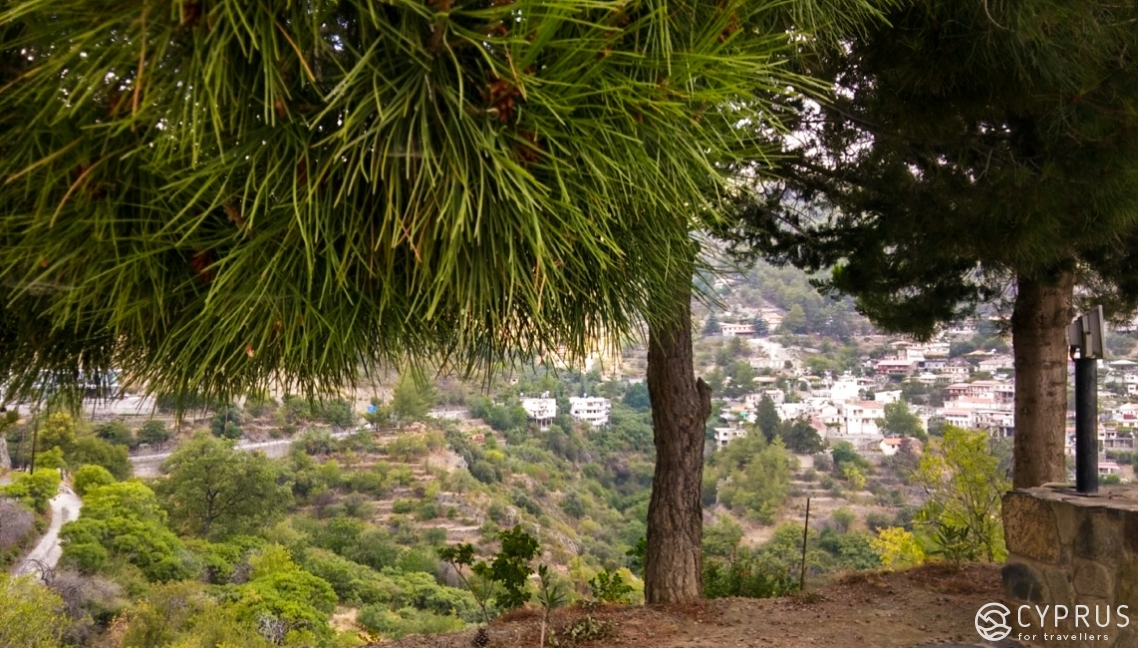
Alona: Under a Canopy of Grapevines
This rather cosy village, hidden in its orchard thickets, left me with a delightful feeling: its several streets are intersected from above with grapevines, creating natural shade on the hottest days. If entering the village from Polistipos, you immediately find yourself in green alleyways lined with a multitude of flowerpots…
It’s worth parking close to the centre, nearby the church of Agios Georgios.
After wandering around the streets a little, it becomes clear you won’t get lost here: aside from the village’s straightforward layout, you will be accompanied by detailed signposts on the streets. More so: aromatic herbs have been carefully planted around the village, with signs next to them giving their names in Latin. Have a walk, enjoy and enlighten yourself!
This is where you’ll start to encounter the mighty thick platans, the precursors of… Platanistasa.
The village features an abundance of “fountains” — taps with drinking water installed in past decades… and even ones a century old, along the street: they are named “Kato Vrisi”, “Pano Vrisi” and so on.
The name of the village Alona (in Greek: Άλωνα) most likely originates from the large flat plain area located lower along the hillside. It once received the name “aloni” to mark how wheat sheaves used to be threshed here in times of old.
Alona is stretched out on the Northern side of the mountains and is limited by two peaks — the Paputsa and Madari — 1200 m above sea level. Its existence was first discovered at the beginning of Frankish rule. It is one of the most stunning villages in the region, with traditional stone housing and magnificent green gardens. The path through the village also runs through gardens of hazelnut, as well as cherry trees, almonds and apple trees.
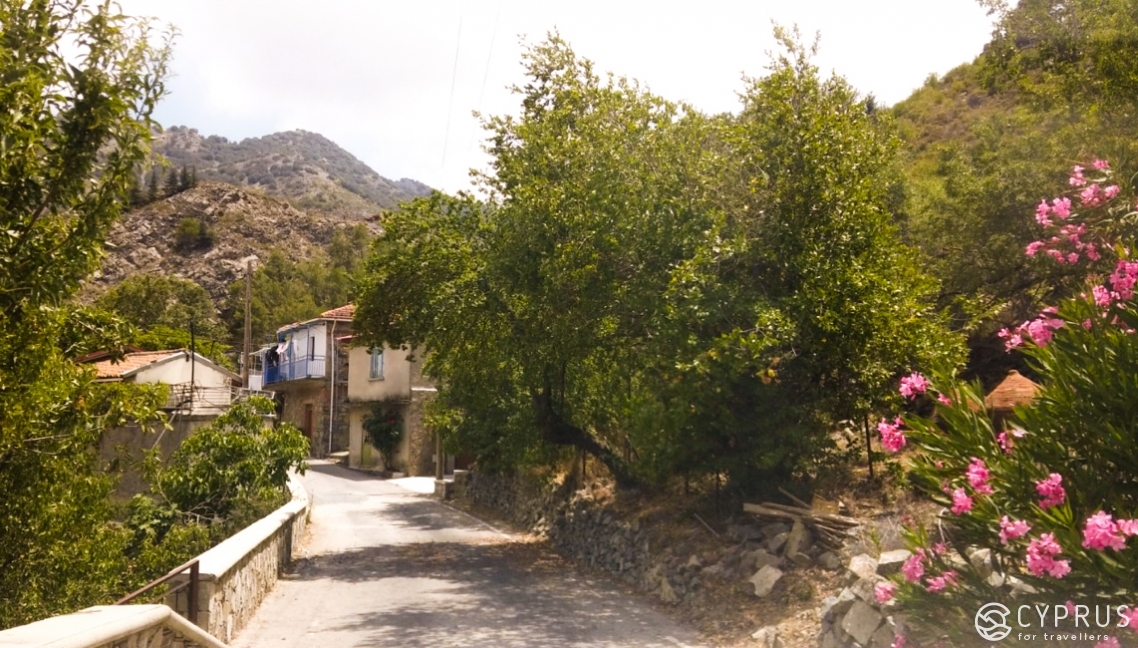
Like its nearest neighbours in Pitsilia, the population of Alona has traditionally consisted of Greek-Cypriot Christians. However, in the age of Catholic and Venetian dominion, the Cypriot church was abolished, with its priests and monarchs persecuted.
Interestingly, the Cypriot Turks stopped settling in these spots long ago: from 1572 to 1964. Many of them loved to come in large families for a holiday here, right until 1974.
Both of the village churches may be of great interest to guests of Alona.
The Church of Agios Georgios stands on the E906 high road, surrounded by trees of cherry and other sorts. It was built in 1835 on the foundations of an older church, which was destroyed in a fire. It also features a stone bell tower.
Amongst the icons on display, you will see Saint George — the patron saint of the village — and the works of Ioannis Kornaros, who was a famous Cretian icon painter of the past (17th century).
Alona is connected with the ancient, miraculous icon of the Virgin Galaktotrofousa or the Milk-Giver (1648), whose glory walked tall beyond the limits of the region. Incidentally, this is one of the earliest Orthodox canons of the image of Panagia. The cult of the Mother feeding the Child was known even before the advent of Christianity. Traditionally, young mothers who are still breastfeeding their babies turn to her for intercession.
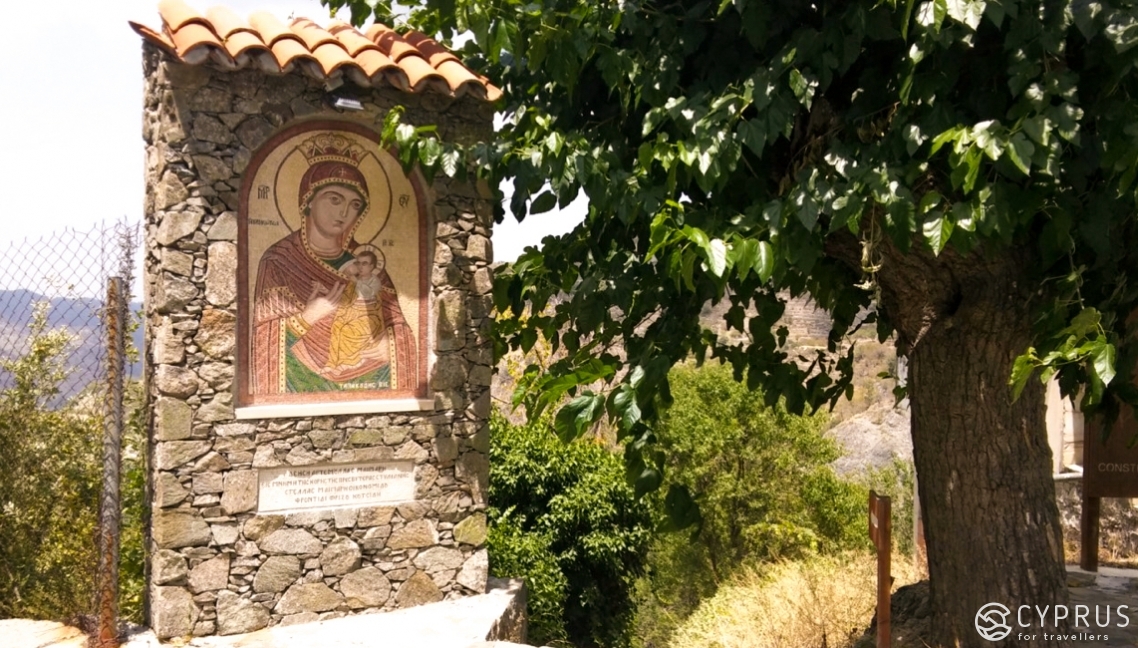
The ancient church of Panagia Kardakiotissa (also known as the Virgin of Kardakiotissa “Prayer of the Heart”) was restored after a severe fire that occurred in 1987 and has been practically returned to its previous appearance.
Several years ago, the chapel of St. Nicholas was restored, thanks to the efforts of local residents in the vicinity, 3 km from the village of Kato Moni. It was built on the site of the former old church of Agios Nikolaos and was opened in 2008.
Here, more than 100 years ago, one of the most famous people in Cyprus was born — the famous painter and graphic artist Telemachos Kanthos (1910-1993). He was one of the founders of the Cypriot school of modern art, and a native to Alona, where you will see his house.
He is known to have been inspired by the local area, its beauty and colours (as we can see from a sample in the collection of the State Gallery of Contemporary Cypriot Art in Nicosia, where the wax mountain landscapes, painted by T. Kanthos, occupy a worthy place — see our article).
As a matter of fact, he wasn’t alone in his love for Pitsilia, for current talented artists — both Cypriots and foreigners alike — come here for creative respite all year long, to seek inspiration.
Unfortunately, in the 20th and very early 21st century, a massive outflow of people from many villages in Cyprus was observed. Alona also caught this trend: the youth, endeavouring to get a higher education and make a better life for themselves, began to leave the countryside en masse, heading for the cities.
Due to this, the average age of local residents has significantly increased. Nevertheless, most of those who left and took root long ago, not only in the cities of Cyprus but also beyond, maintain their connections with their families and friends who have remained in the Troodos Mountains. Thus, it’s no coincidence that on days of celebration and in the summer holidays, Pitsilia is incredibly animated and filled with a large number of guests.
Good news: a series of projects have lately been implemented in the district, aimed at breathing new life into the remote villages situated far off from Cypriot highways and noisy modern life. Here they actively strive to preserve the traditions and customs of their ancestors, as well as to transfer knowledge and respect for them to the younger generation.
Don’t be surprised if having come here one day — especially on important holidays, walking along narrow, picturesque streets and marvelling at old, albeit restored houses — you see groups of girls in traditional dresses and other national clothing from past years. They can be found carrying clay jugs of water on their shoulders, while the men are also dressed in folk “vraki” — wide, folded trousers. You will see them reining over-encumbered donkeys along the narrow village alleyways and paths.
Stone houses with wooden balconies and tiled roofs, typical for the architecture of rural Cyprus, are scattered throughout Alona. Alona is, no doubt, of architectural, historical and cultural interest, and is worth it just to get away from the main road.
The village also features a library and reading hall.
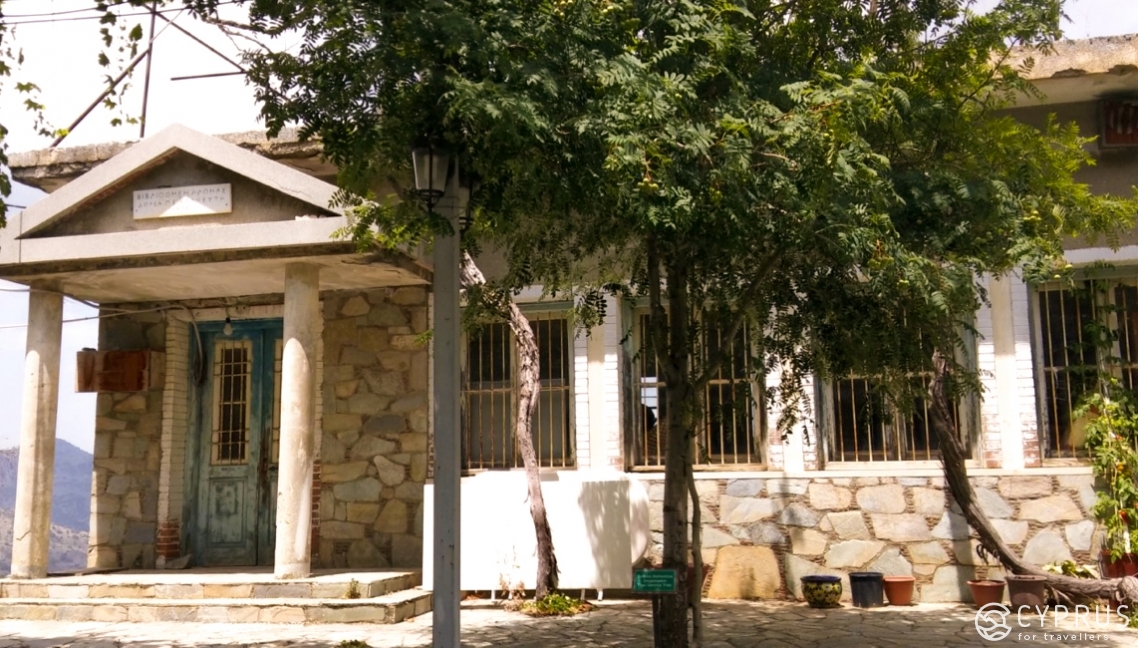
Two festivals, which are definitely worth visiting if you have the chance, are held annually in the village.
The first of them is timed to coincide with the Assumption of the Blessed Virgin Mary, on the 15th of August (see: Holidays in Cyprus).
On this day, you can first take part in a festive service, then try national Cypriot dishes and drinks, as well as enjoy the holiday in the company of the locals.
The second traditional rural celebration in these parts is the zivania festival. It aims to preserve zivania's traditions, as well as spread the culture of its consumption and production — which is popular both in the villages of Troodos and throughout the whole of Cyprus.
During the zivania festival, the manufacturing process is demonstrated, along with various contests and competitions, such as races, organised in the centre of Alona. The kiosks sell products from local manufacturers which you can try and then purchase the most delicious finds. Don’t deny yourself the pleasure of participating in the music and dance programmes on offer!
During the celebrations, the “month of zivania” will be announced — starting from this moment and lasting for the whole month, zivania will be actively promoted in the Cyprus market, as they say, in all walks of life: at airports, in some supermarkets, everywhere. In island hotels, all guests will be offered to taste zivania and a variety of traditional snacks (dried and dried fruits, sujuko, nut treats and more) for free.
Hint: the event is traditionally held in early November of each year.
If the idea of staying for a couple of days to a week in Alona is appealing to you, then here is a useful contact where you can find out about room vacancies (each for 2 or 3 guests, with modern furniture and all amenities): “To Apokentro” (opposite the bank branch in the village): +357 99757234.
Reservations can also be made at booking.com.
We, on the other hand, simply continued to go along the same road (E 931) that brought us here, and after several minutes, we entered Platanistasa.
Platanistasa: the Land of Plane Trees and Grapes
It is located 14 km to the southwest of the village of Mitzero, in the northern part of Troodos, lying at an average height of 940 metres.
It is known that in 1974, ownership of Platanistasa, along with some other villages, was granted to a relative of Katerina Kornaro — the then Queen of Cyprus. The history of its existence, however, begins long before that: in the vicinity, there are numerous pre-Christian burial sites.
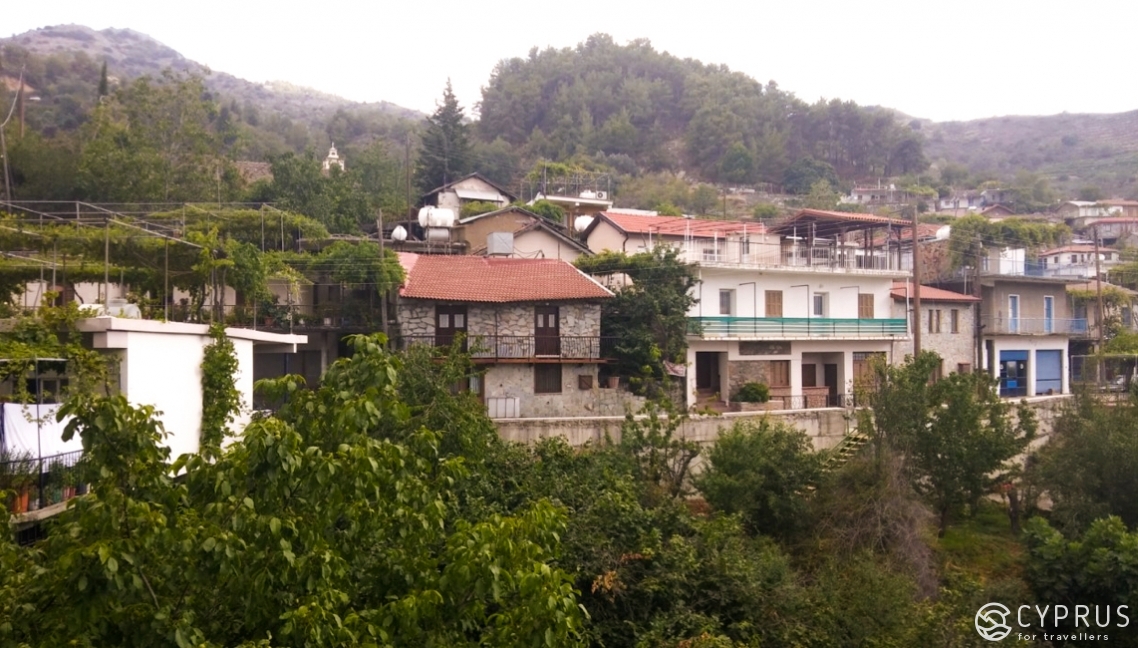
We stopped in the centre of Platanistasa at a village cafe-restaurant, whose owner, Mr Michalis Kampouris, was very hospitable. Not only did he give us directions for where to go and what to see but also kindly volunteered to accompany us on our stroll, telling and showing us a lot of exciting things about the settlement and its people.
It turned out that today only 62 people live here constantly. However, every weekend, Platanistasa more than doubles in liveliness, noticeably filling with people from Nicosia and Limassol. They come here to relax in the mountain back, away from their exhausting summer days at work spent under a breeze of office air conditioners, followed by stuffy evenings on the terraces and balconies of their city houses and apartments which have become heated up throughout the day.
You won’t have any trouble covering Platanistasa in a day: all its main attractions are located a short walk away along the central street of Griva Digeni. By the way, you’ll be sure to find a parking spot if you continue along the road, or having reached the centre, you head upwards a little, following the sign for the school.
Our walk began from the central square at the once old cafénio, which is now the cafe-restaurant “Achilleas”.
The square is both a magnificent terrace above the hills and a restaurant platform completely entwined with green-grape vines. Large clusters hang from above under the leaves glistening in the sun. Under their shelter, you can look at the streets of Platanistasa, as well as the silhouettes of the mountains.
Church of the Archangel Michael and the Source
In a secluded corner under a canopy of trees, there is a place to rest above a natural spring; nearby lies a staircase steeply shooting up the hill. It was named “the path of the Archangel Michael”, probably by some local poet.
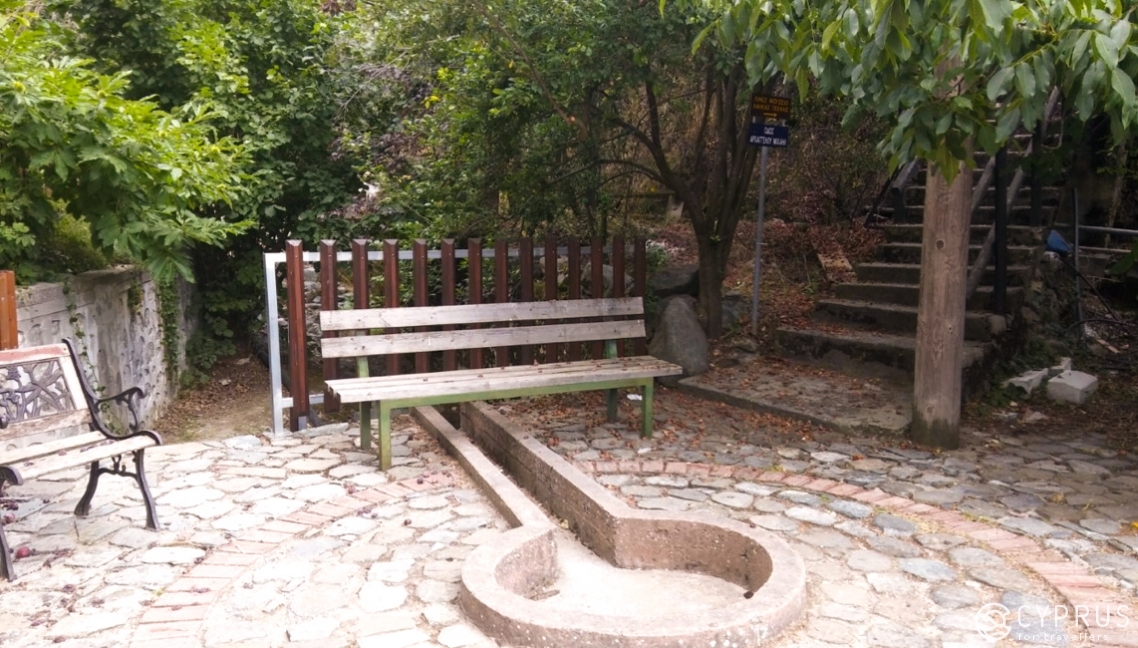
You ascend along this very scenic route, one with the fragrant aroma of ripened quince fruits having fallen to the ground, imparting their sweet juices right beneath your feet. At the top, surrounded by untamed plum trees, fruit orchards and terrace allotments, you find yourself on a small square in front of the church.
Through the locals' efforts, this place has been so richly decorated with a multitude of flowers and aromatic herbs that it resembles an alpine church from an Easter card. Feast your eyes on the view!
As for the church: like many churches in Cyprus, this 19th-century build was erected on an older and more compact 15th-century church. Moreover, when the building was being destroyed, the locals were incapable of possibly fathoming its genuine value.
The Church of Archangel Michael only obtained its “tis-stegis” roof form, typical for the churches of Troodos, in 1916. The portable (portable) icons of the church — all of which date back to 1883 — are considered unique.
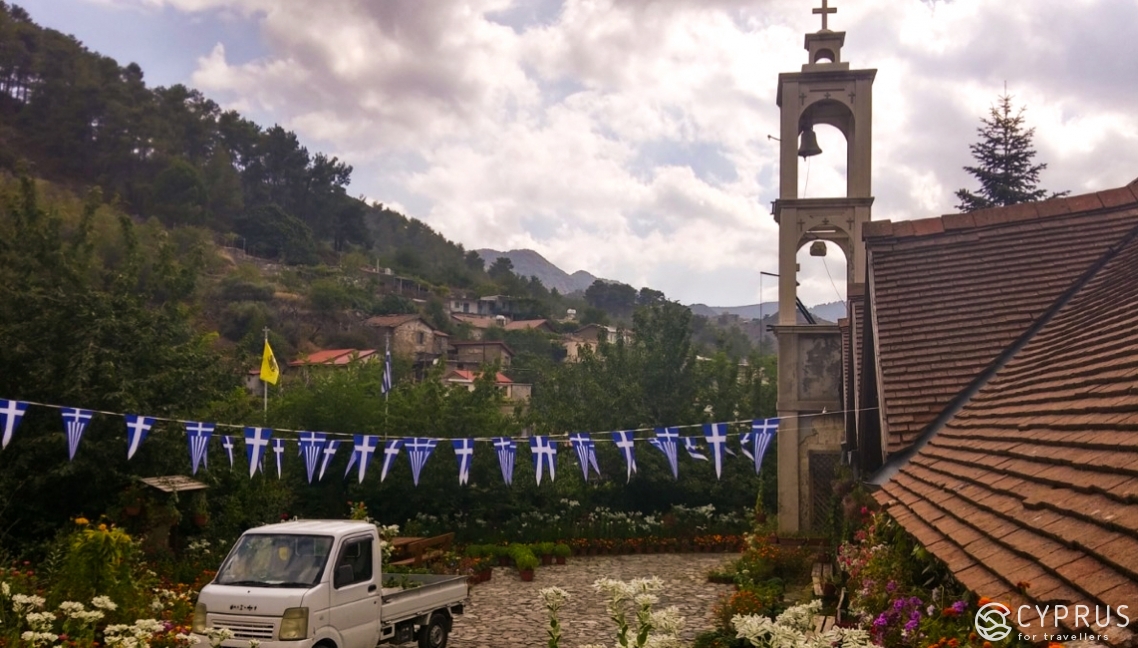
The church used to be surrounded by an ancient cemetery, the remains of which were subsequently transferred to the territory of the village cemetery, lower down the street.
Archangel Michael's Day is celebrated on September 6th.
Besides the ancient church, there is another interesting object to study: pay attention to an old stone cross whose pedestal has images of carved stone lions. Most importantly, there is an inscription on the building which urges parishioners to be cleansed of sins.
A small village museum is located on a square nearby the church.
Folklore Museum
Open since the 14th of August 2000, after a long, 6-year restoration, this is the small building of a former mill, displaying various “objects” and utensils used in the past for the extraction and bottling of olive oil. Here you will see other household items, as well as a loom, agricultural tools and wicker baskets for collecting and transporting olive crops on donkeys.
It is only possible to inspect this collection of artefacts in the presence of the local mukhtar, who acts as the village head (contacts are available on the village website, see below).
As a matter of fact, the organisation and opening of the museum has become a significant cultural phenomenon in local community life. The Public Council and cultural services under the Ministry of Education of the Republic of Cyprus, as well as the administration of the Nicosia Diocese, contributed to this accomplishment.
A few words about the mill itself.
Olive Oil Mill
So, in the building where the local history museum is located today, there used to be a traditional press for oil extraction. The museum, in fact, displays all stages, from collecting the olives (from the end of October to the beginning of March) to ultimately obtaining the product.
Before the construction of the mill, the old olive press used to be located in the open air, in the courtyard of the Church of the Archangel Michael, serving the needs of both the village and the entire region.
These types of mills traditionally had two stone millstones: a lower horizontal stone, the so-called “skoutellin”, and another — vertically rotating alongside with a wooden lever, which was set in motion by animals (donkeys). The olives, brought in baskets and spread on the lower millstone, were thus crushed and then sent to the press, usually located in another part of the mill.
Historians described the presses as consisting of “a horizontal base with two vertical posts and a massive wooden screw which moved between them, pressing rounded bindings against the holes (zempilia), placed one on top of the other, on the base of the press filled with olive pulp.”
A circular canal, carved at the base, would collect oil flowing out of the olives from the “zempilia”, and send it to a special clay “reservoir” to amass — this was submerged in the floor and referred to as a “dani”.
To completely extract all the oil from the olive pulp, with the help of “zempilia”, the “mush” obtained from the first extraction underwent “a second round” of pressing, but only after being washed with boiled water.
Jumping ahead a little, I’ll mention that another mill remained — a water mill — which we had yet to uncover.
Water Mill (Currently Under Reconstruction) [4]
Coordinates: 1.5 km to the north, literally at the village entrance if coming from Alona, as well as from the motorway side to the villages of Alithiniou, Livadia and Polistipos. There is a well-preserved water mill here, which for many years ground wheat into flour, serving the needs of the entire region’s villagers.
Experts in the beauty of watermills continually shower it with praise in their blogs.
And in fact, the place where you can see it is really a sight to behold in itself: the ensemble, including the water tower, is located above the course of the river, on its southern bank, surrounded by beautiful landscapes and a verdure expanse.
The mill was previously the property of the Church of the Archangel Michael in Platanistasa. Many local legends and stories are rumoured to be connected with this place, including some about ghosts.
It later belonged to the famous Cypriot artist Theodotos Kanthos, a native to the village of Alona. Today, it is owned by his daughter, Evgenia.
Now we return to the centre and head down again along G. Digeni street.
The Church of Agios Ioannis (Church of St. John the Evangelist)
А stone, single-nave build, constructed from large boulders and undressed stone from the local region, covered with old, darkened tiling (the roof is of the same “tis-stegis” shape), located in the northern part of the village.
This is an even older church, dating back to the 17th century: it too was built on the site of an earlier one, which for a long time was the main parish church, until the Church of the Archangel Michael adorned this mantle.
The church was recently restored by specialists from the Archaeological Department (at the same time as the renovation of the village square) with the assistance of one of the locals, Kyprianou Kouppa, who sponsored the entire project.
In the church, visitors can feast their eyes on a beautiful 17th-century iconostasis, along with its portable icons.
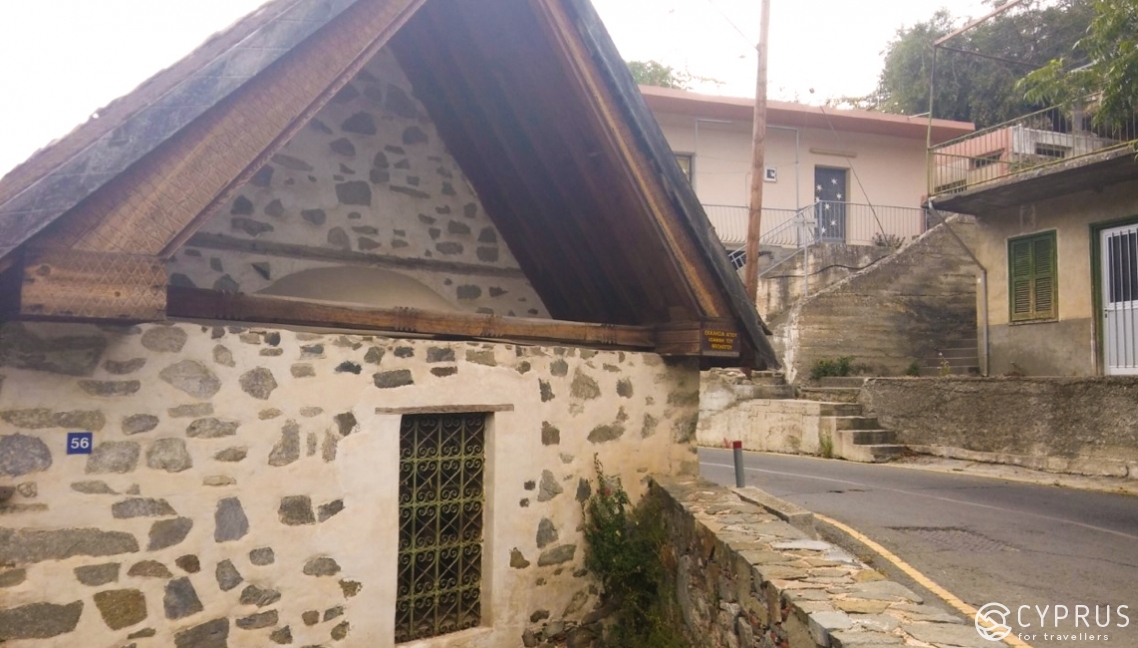
We exit the church premises ...
Meanwhile, the fragrant smoke of firewood, mixed with a light sour note of red wine, was ever more strongly and insistingly permeating the air.
Delicacies Factory (Smoked Meats) and its “Boutique”
It is located literally under the walls of the ancient church of Agios Ioannis.
As we'd luckily chosen to come in the evening, we were able to talk to the owner, as he and his employees had already finished all their main business for the day, but were still yet to go home. It turned out that all the delicious produce was made of pork, while some other types of meat (goat and lamb) were prepared exclusively according to ancient recipes and techniques. Moreover, to achieve the smoked effect in the meat, they used smoke from burning firewood, with no gas burners whatsoever, in contrast to many other similar factories on the island.
And so our impromptu tour began. We entered a compact production room with professional equipment installed. Its doors lead out to different workshops.
In the summer, as we were immediately warned, less meat is produced. Тhis meat processing plant has been in Platanistasa since 1966.
So, to the right of the entrance, you could see the smokehouse: as soon as the door was opened, cuttings of carcasses suspended from the ceiling appeared in puffs of caustic smoke, stinging your eyes and throat. The meat is stored here for 2-3 days.
The “prepped pieces” are then covered with a layer of spices (many different ones) and hung on hooks in an open room under a ventilator to dry them out: sausages require one day, but other types of smoked meats can be hung for up to three days.
Ready-made delicacies are vac-packed, and soon after all products are stored in a refrigerator.
Then there was the “black” room — a somewhat spooky place with its walls and ceiling, whose surfaces now have a deep black gloss: this workshop, for some reason inappropriately resembling a medieval chamber, is only used to make smoked ham.
Curiously: the delicacies at this factory acquire their distinctive aroma thanks to the smoke obtained from the almond trees used in the smoking process. In fact, alongside almonds, the wood of old cherry and apple trees is also burnt to enrich the flavour.
There is also a break room for tired (and slightly burnt out ;)) personnel.
So, as we passed through, stage by stage, we eventually reached the director’s office where, as he especially noted, meetings with representatives of audit commissions are regularly held.
We thanked Mr Iorgos Savva Spesiotis for talking to us and for visually demonstrating the manufacturing process.
For those keenly interested in this topic, we’ll speak about locations and contacts a little later.
That day, the factory owner taught us how to manufacture these deliacies. We also learnt from our short yet fascinating walk around the modernised plant. But there was more to come.
After returning to the village centre (“Achilleas” is your reference point, don’t forget!), we were invited by his wife, Mrs Panagiota, to a meat boutique of the same brand, named Διοσματι Παραδοσιακα Αλλαντικα (or Allantika Diosmati), where we tasted the brand’s wine (the winery is located lower down the hill, and we will definitely visit it another time!).
We tasted various products with all the necessary quality certificates, made according to old traditional techniques.
Amongst the unexpectedly wide assortment on offer, these products stuck with me the most:
- lucanica sausages (consisting of pork, red wine, coriander, black pepper, cumin, etc.),
- smoked bacon (containing: pork bacon, red wine, coriander and salt),
- smoked ham (containing: pork ham, wine and salt),
- and luntza (loin) — and this: pork fillet, red wine, salt and coriander again.
The shop also has other local products on sale, as well as gifts from nature: all kinds of delicious nuts, rustic honey, sudjuko and jams, grape leaves for kupepa-dolma, olive oil, zivania, sauces and more.
Address: St. Gregori Afksentiou, 62 (Platanistasa)
Tel.: +357 22652440, +357 22652623, +357 99643761
Website: www.diosmati.com
Email: diosmati@outlook.com
With regards to where it’s best to stop and grab a bite in Platanistasa, the choice is obvious.
In the local café-restaurant “Achilleas”, not only can you have a bite to eat and find out useful information about the village; but there’s also the opportunity to stay “a little longer”. To spend some time relaxing with a pleasant conversation and a game, for example, of billiards or tavly etc. If you’re looking for such a club-like break, go to the hall located on the second floor, above the dining room.
Rooms for tourists are available to rent in one of the neighbouring houses on the central square (you can always find out more in “Achilleas”, or check out the contacts indicated on the village website).
For more about the village, see here: www.platanistasa.org.
As we said goodbye for today to Platanistasa, we drove through a shaded Municipal Park with a memorial dedicated to the participants of the Second World War (a monument to the EOKA fighters [5] was across the street from it and to our right).
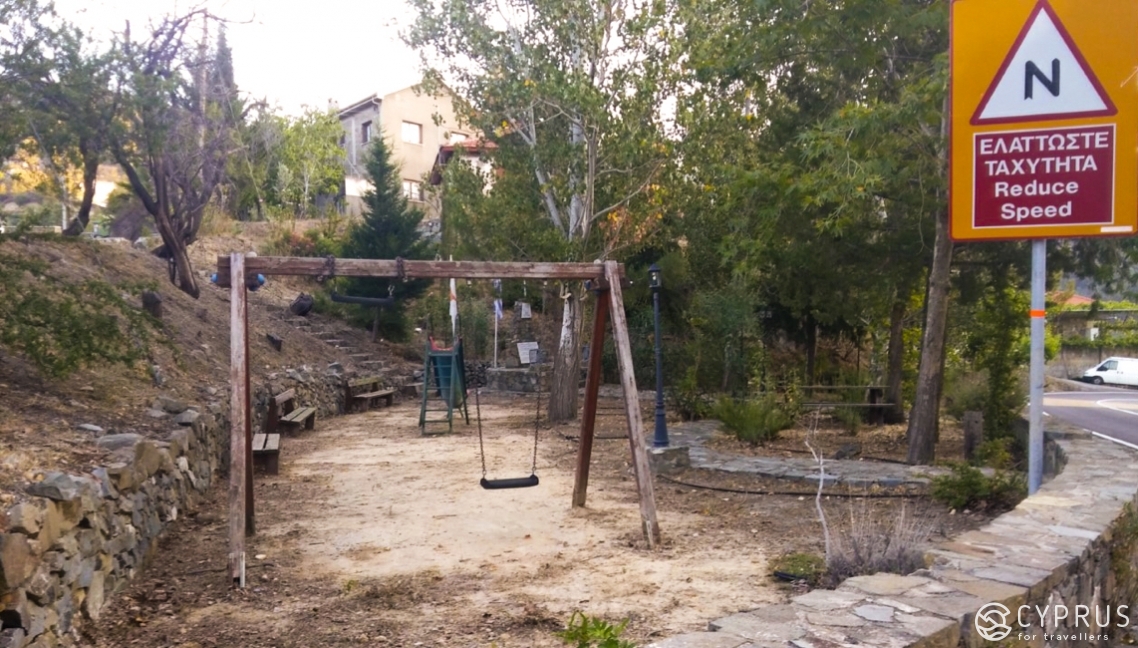
We then branched off from the main road, heading left into the mountains (following the signs). Several minutes later (about 6 km), we were led to another famous landmark, where the road came to a smooth end.
The Church of the Holy Cross of Ayiasmati
The Church of the Holy Cross of Ayiasmati (translated from the Greek: Σταυρός Του Αγιασμάτι) is a UNESCO World Heritage Site, along with nine other painted churches in the Troodos region, located between the villages of Polistipos and Platanistasa.
It is located roughly northwest of Platanistasa village and 10 kilometres from Polistipos, on one of the slopes surrounding a small but very picturesque green valley.
The church is known to have been constructed in 1494 and has a sloping roof surrounded by a closed attic. — something characteristic of religious buildings in the mountains. The surface of the inner walls, as well as the space above the southern entrance, is covered with 15th-century frescoes.
Based on the technique, the paintings clearly belong to the “Cypriot” school, which is characterised by a detailed study of the image, a vibrant colour range and precious ornaments.
Ayia-tu-Ayiasmati is the only surviving building of the former monastery. It possesses the same name, as indicated by the inscription located inside the church and also above the south door.
The ruins of another small church, Timiu Prodroma, lie in the north-west. Moreover, today’s scientists suggest that in the event of excavations in the vicinity, the remains of other, former buildings of the monastery, will be discovered.
The exact date when the monastery of the Holy Cross of Ayiasmati was founded is unknown. However, as was claimed by Agros Nearchos Clerides, a well-known local historian, researcher and teacher, it was founded roughly in the year 817.
After the monastery's destruction, the church was in a state of dilapidation and complete oblivion for many years. Surrounded by a pine forest, it was known only to the local shepherds, who grazed their goats in this untamed spot on the mountain slopes.
On more than one occasion, they even used it as a barn, locking animals in the church attic, lined with wooden boards. In winter, they would light fires nearby to warm themselves.
At the end of the 19th century, the Metropolis of Kyrenia donated the lands of the former monastery to the inhabitants of the close-lying village of Platanistasa, on the condition that they cultivate the land and plant trees. In return, the local landowners were to give half of their harvest to the Church.
Half a century later, the metropolis is auctioning these sowing fields and other lands, aside from a small grove and some areas near the church.
Until 1964, there was no road to the Church of the Cross of Ayiasmati. If you wanted to visit and marvel at its famous frescoes, thanks to the work of researchers, you either had to walk several kilometres along a path or choose a poorly-accessible shortcut. Soon after, the road was paved, and a new route opened to tourists and pilgrims, which today spans over four kilometres.
Also, it’s possible to get here along the road connecting the former monastery with the villages of Ksiliato — Lagoudera.
To make sure the church will be open during your visit, simply call the following number in advance: +357 22652562. Ask them to open it for you at a specific time, or to give you the keys so you can look around yourself (the latter will require you popping back to the village and returning the key to the caretaker).
By the way, if you choose a different route through Pitsilia to get here, there are several ways to arrive at this ancient monument.
So, if coming from Palechori, follow the signs to the right towards Askas, and then drive through Alona and Platanistasa until you get to the turn you need onto the F981.
If you’re coming from Limassol, the road leaves for Polistipos (our E 931) from Agros (on the E 909); then, after passing Platanistasa, take the F 981, and you’ll soon end up here.
In any case, regardless of how you get to the church, you will be amply rewarded for your time and patience.
Here, far away from the places people usually visit, you’re awaited with a sense of remoteness and tranquillity, along with stunning panoramas surrounded by dense greenery. From a certain angle, you will even see views of the fertile plains of Morphou and Messaoria, stretching out further to the Pentadactylos mountain range, whose darkening silhouette slightly covers the horizon.
Getting there:
You can take various routes to get to Platanistasa and the surrounding villages we have visited today, as well as to those we have so far only passed.
From Nicosia (2 options):
Option one: take the route to Troodos and head along Nicosias Street (the B9), then take the last turn to the left at the approach to Peristerona (Morphou district); head along the E 906, which will lead you to the villages of Orounta — Kato Moni and the small town of Gefiri-tis-Panagias ("The Virgin's Bridge”)
The second option: go through the village of Deftera in the direction of Agros (along the E 903 or along the E 905) and further along the E 906 highway.
It’s around a 45-50 minute journey on the whole.
From Limassol:
Start your journey to Pitsilia from the Troodos roundabout junction and continue onwards heading for the villages of Alassa, Lania and Saittas. Turn right and then follow the signs for Kyperounta and Kato Amiantos. When passing Kyperounta and Chandria, take a left onto the road leading to Platanistasa. The same route will then lead you to Polistipos.
The turn to the right of it is your route to Alona, which after passing, you’ll soon end up in Platanistasa again.
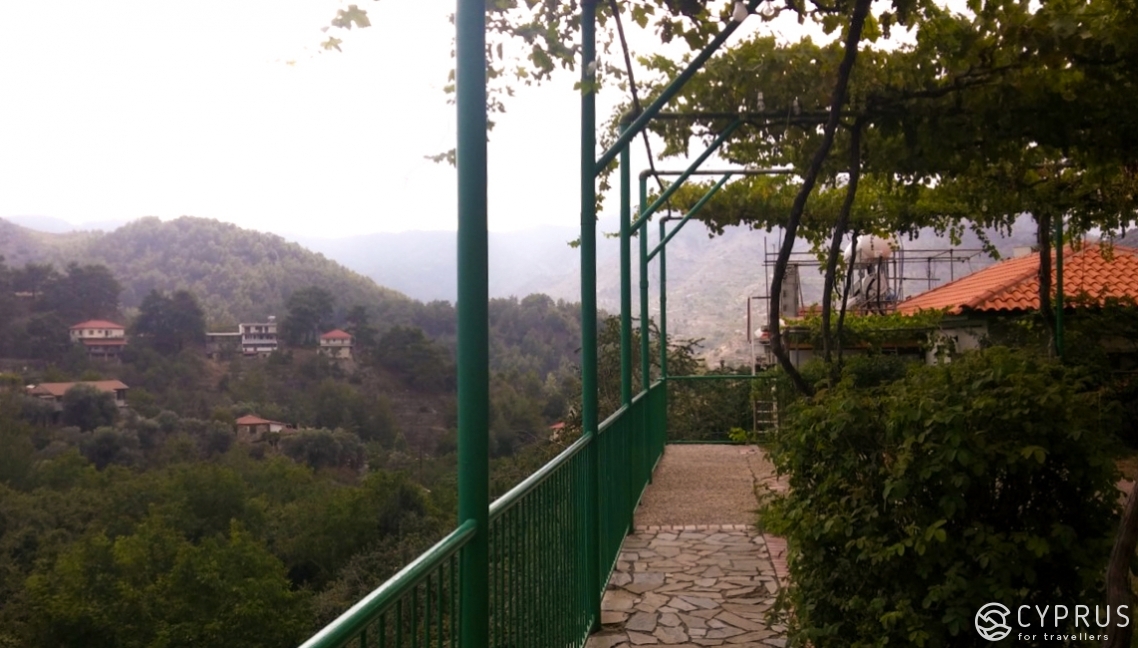
Until Next Time for More Discoveries!
[1] See: «L’île de Chypre» (1879).
[2] As a matter of fact, this church was not the first in the village to be dedicated to Agios Nikolaos. Its namesake had already been here since the 14th – 15th century. It was tiny, with one common room inside and a wooden roof. The current church is decorated with frescoes, possibly dating back to the 15th century.
[3] The four locals still considered missing are Andreas Argirou, Panagiotis Pavlou, Loizos Sokratus and Renos Khristoforu.
[4] On the village’s website, you can find a very cheerful message of assurance from the local administration, saying that: “Everyone wishes the appropriate measures to take place shortly, and the watermill will be restored, [becoming] accessible ... along with other attractions and monuments”, thus turning the village into “an attractive resort for visitors, to ensure the progress and prosperity of Platanistasa”. I’d like to believe so!
[5] As a matter of fact, not only the bronze and stone statues of the fighters — to which travellers through Pitsilia are already accustomed — remind us of the events in Platanistasa. Amongst a forest of pines, on the Katofidi hilltop in the southern part of the village, stands a new chapel built by the villagers in the name of the Virgin Mother (Panagia Kayafigiotissa). It is a reminder of the pain suffered by mothers whose children went to fight for EOKA in 1955-1959. In ancient times, another one stood below it at one time, which during the years of Turkish dominion, mothers would use to shelter their children from mass abduction. Plans are underway to start its restoration soon.

